To my other TR6 pages.
January 5, 2015
Windshield Wiper Motor & Wheel Boxes
[Click the pics for a larger view]
The
TR6 uses a 12 volt DC motor to operate the windshield wipers. The
motor drives an integral crank gear that moves an arm in reciprocal
motion. The arm connects to a "flexible rack" drive cable that
communicates the reciprocal motion to two wheel boxes where the wiper
arms attach.
This motor and gear assembly is used on a variety
of British cars. Mine was in working order, but old and dirty.
It seemed like a good idea to freshen up at least the internal
lubrication and whatever else might need attention.
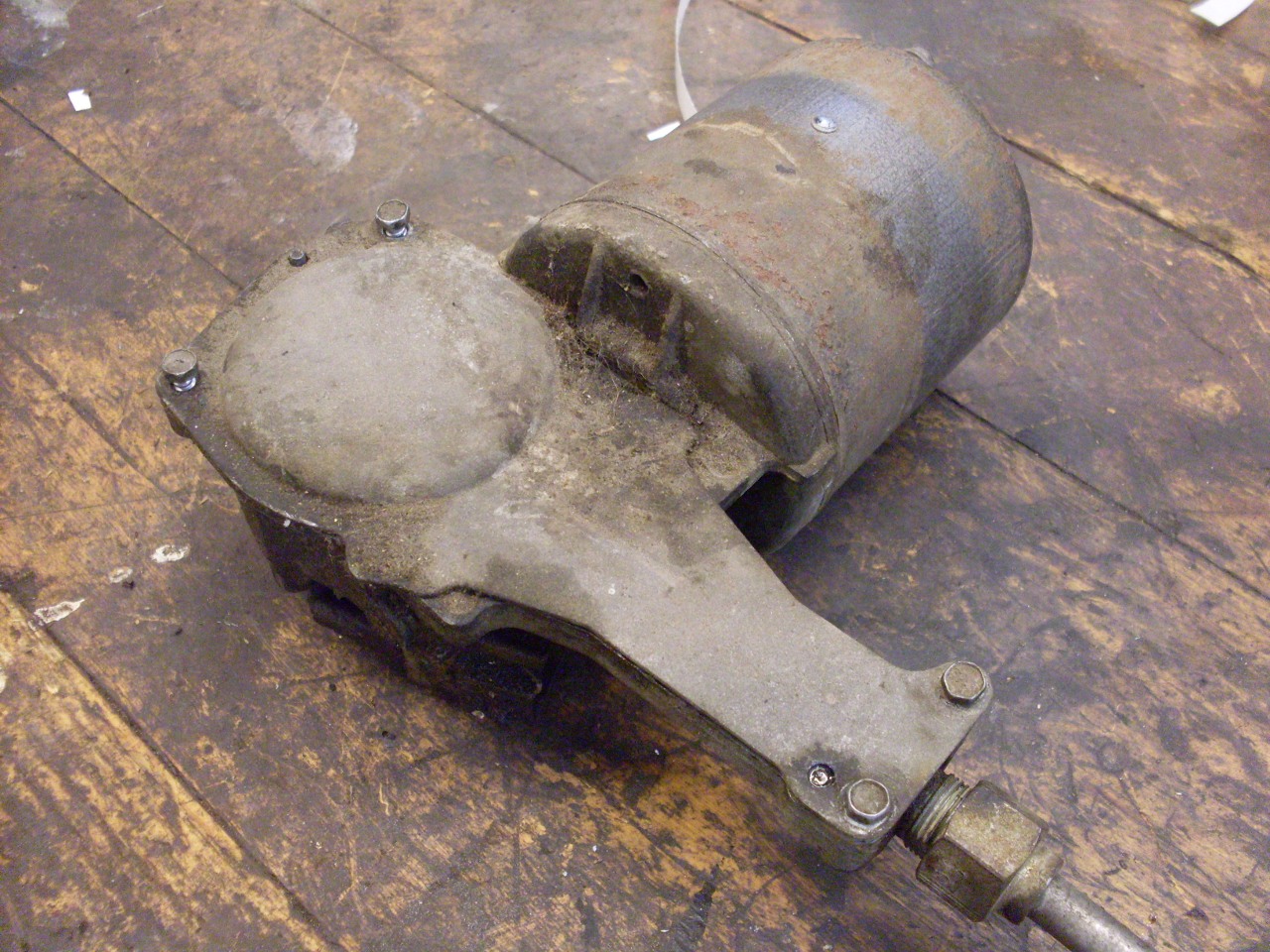
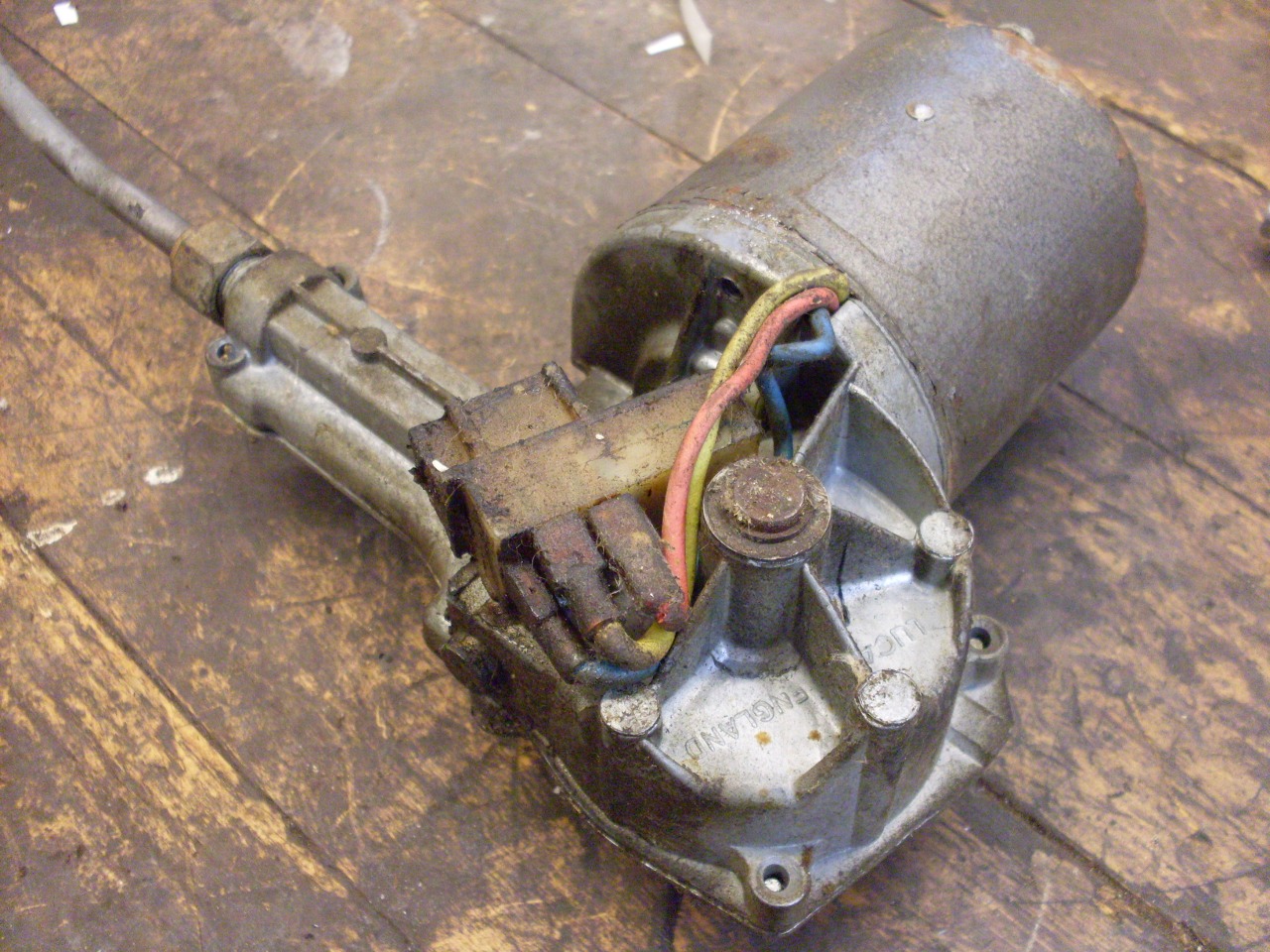
Taking
off the top cover reveals the internal mechanics of the rotary to
reciprocal conversion. A worm shaft from the motor drives a worm
wheel, which in turn drives a crank arm. The crank arm slides a
block back and forth in a nylon lined channel.
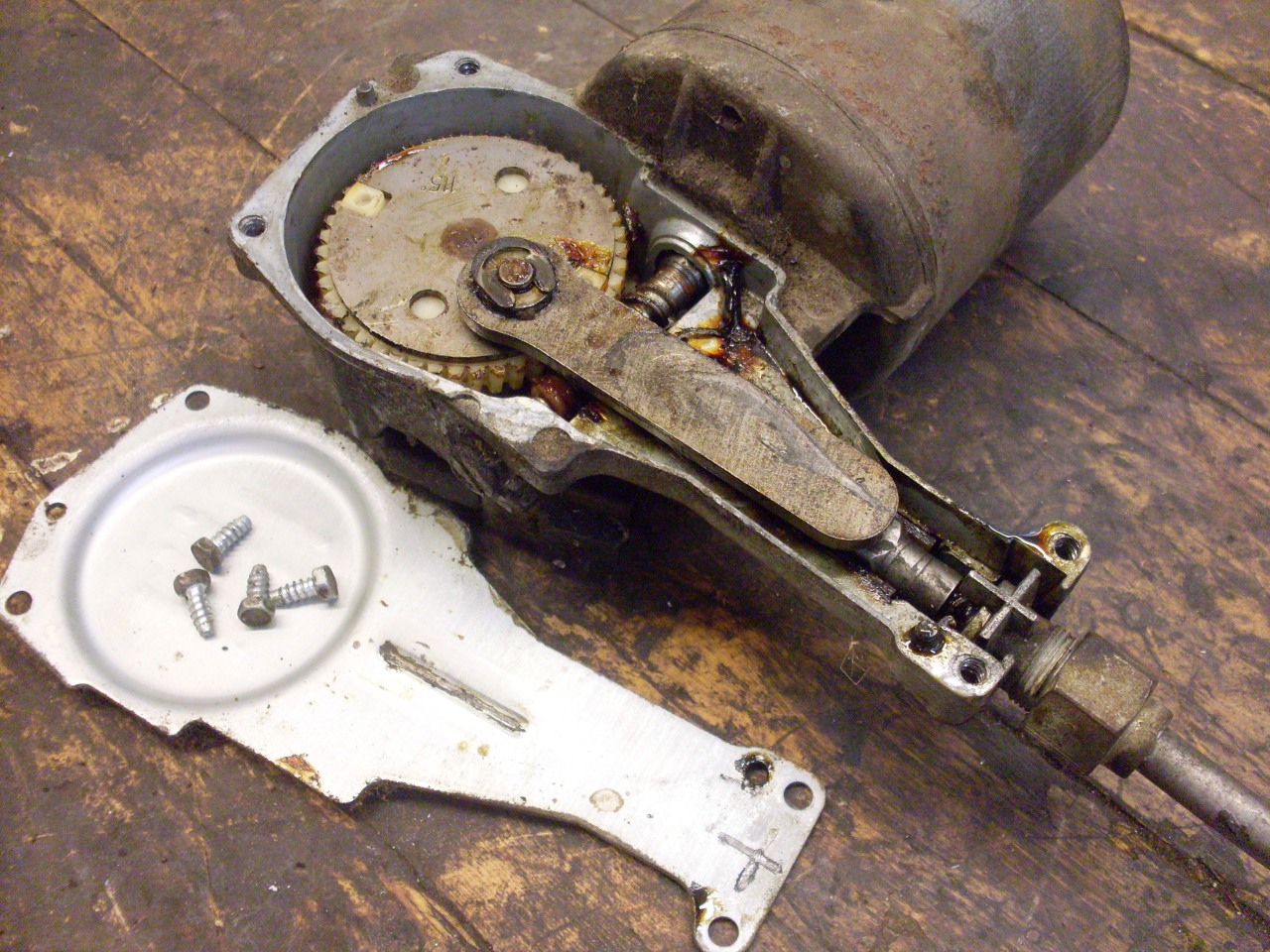
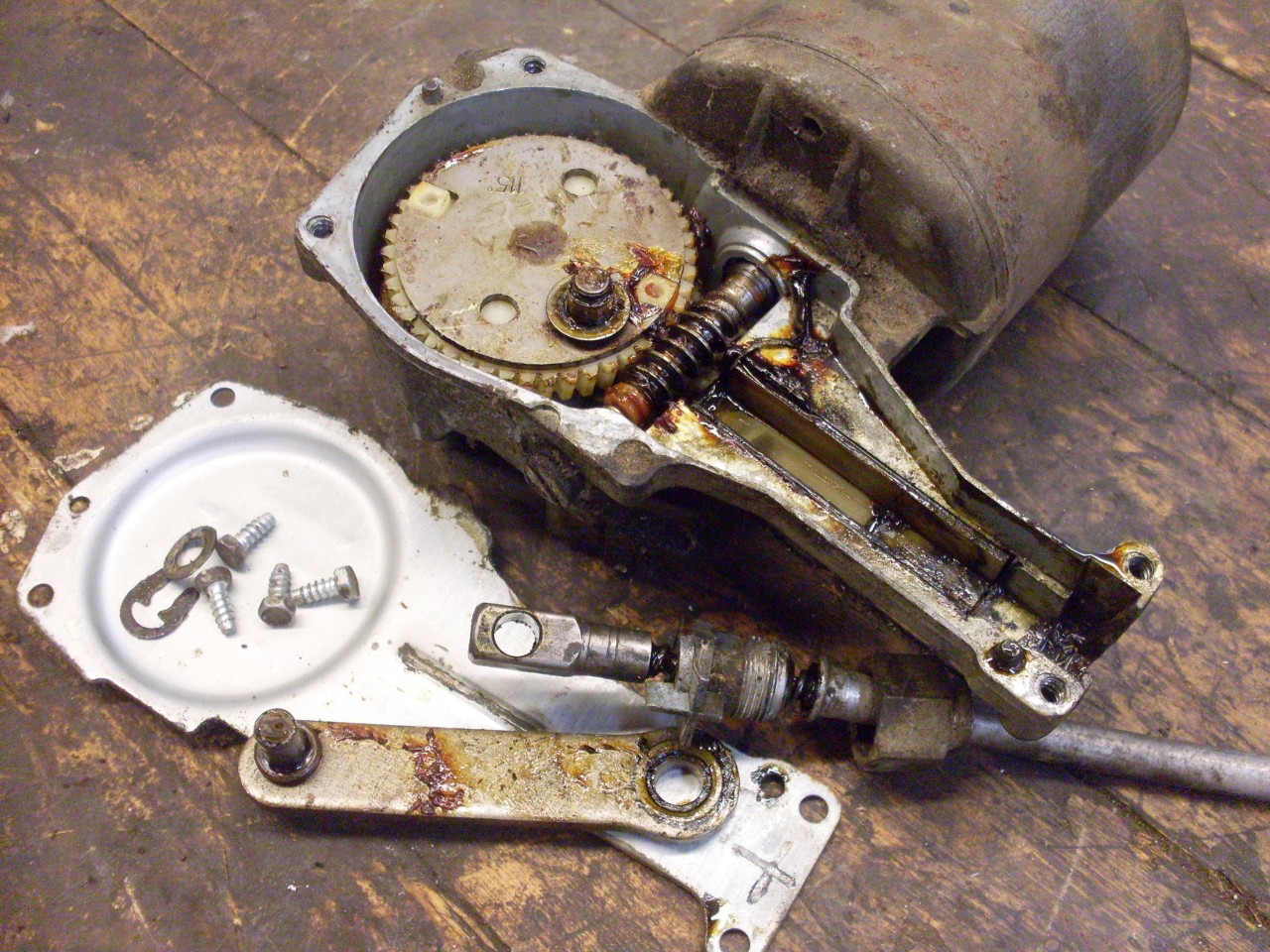
Removing
the through bolts releases the motor from the gearbox casting.
This shows the brush board. The small brush at an angle to
the others is for the slow speed.
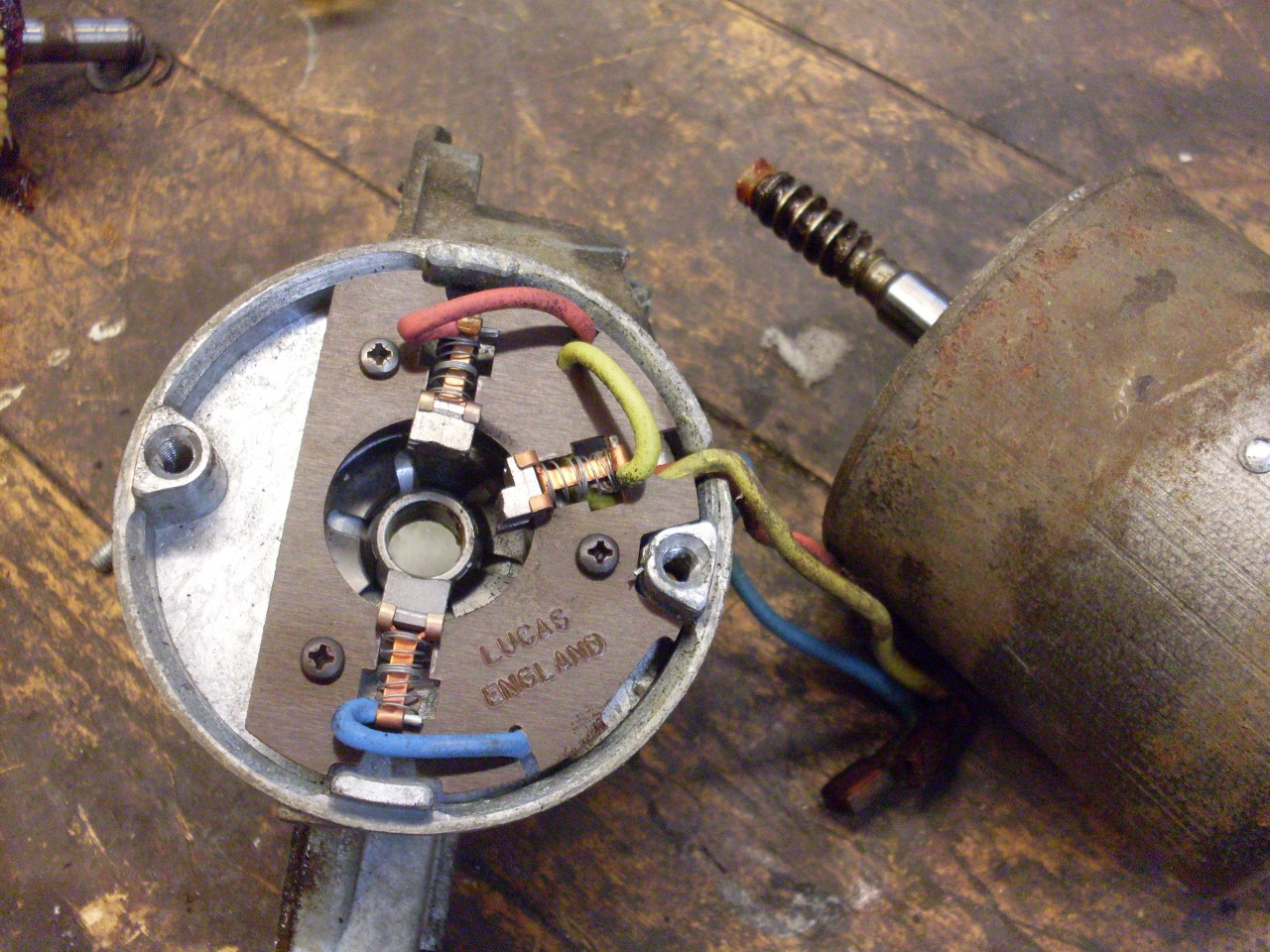
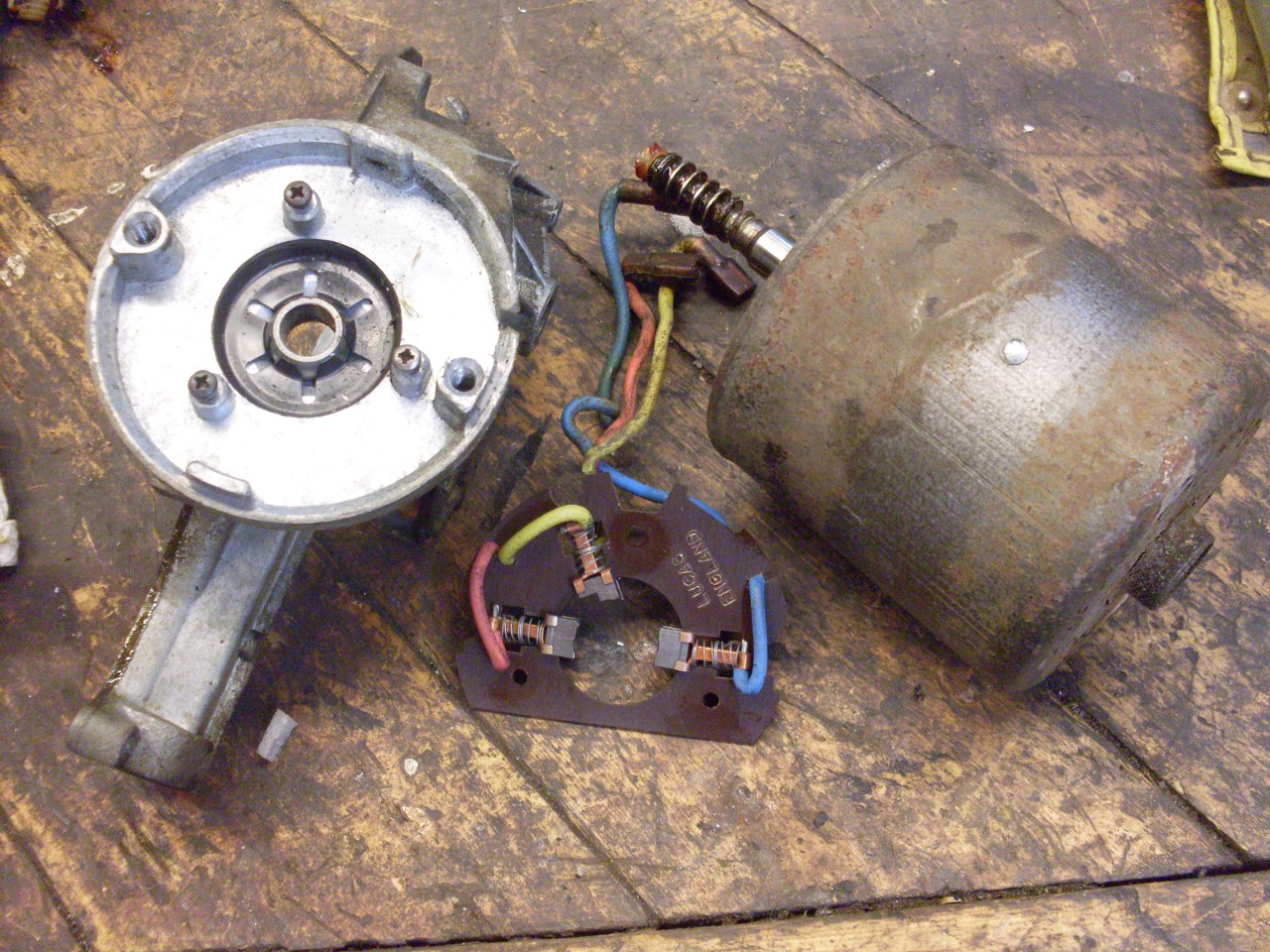
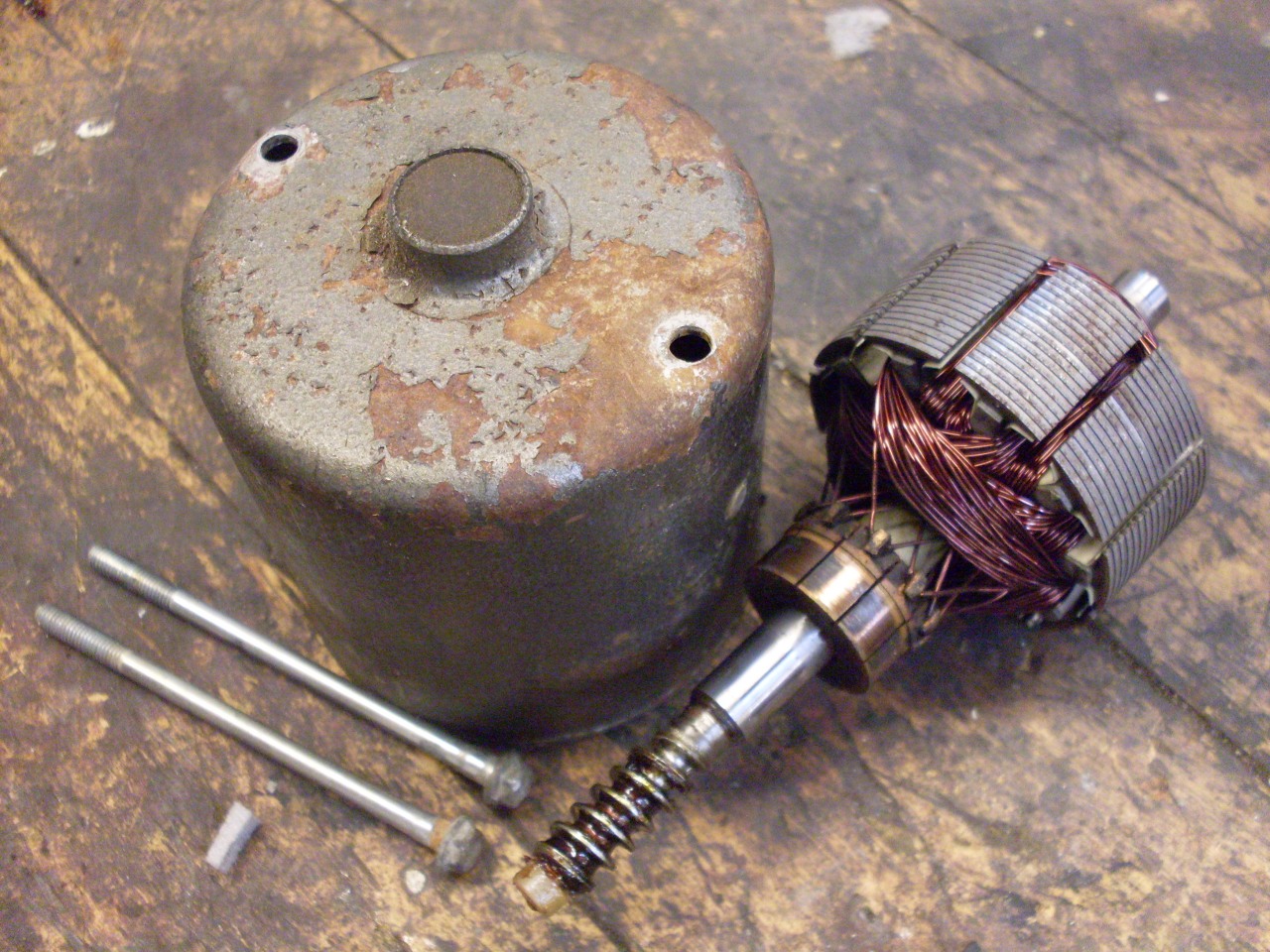
I cleaned up the main die casting and gave the exterior a light bead blast.

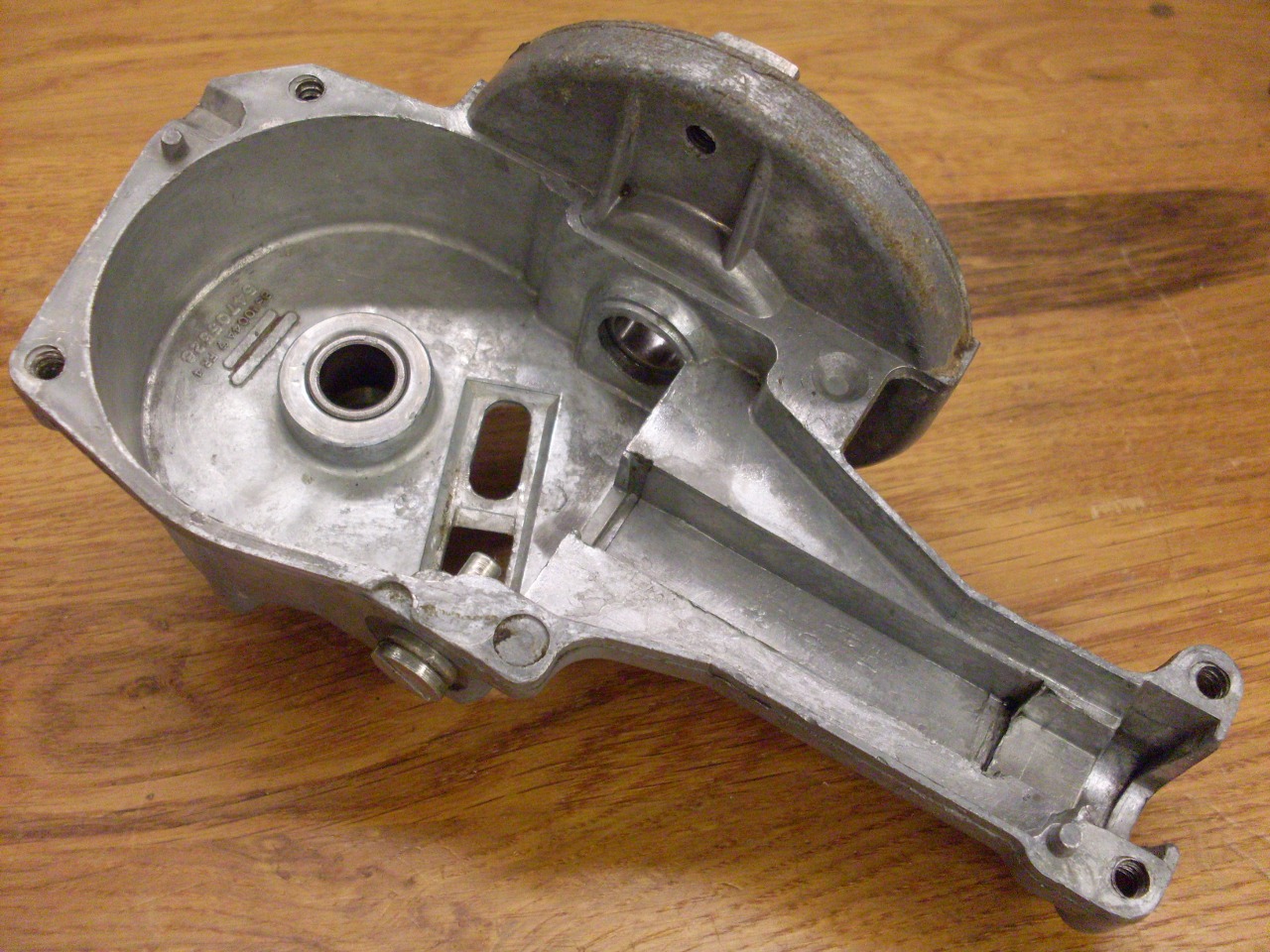
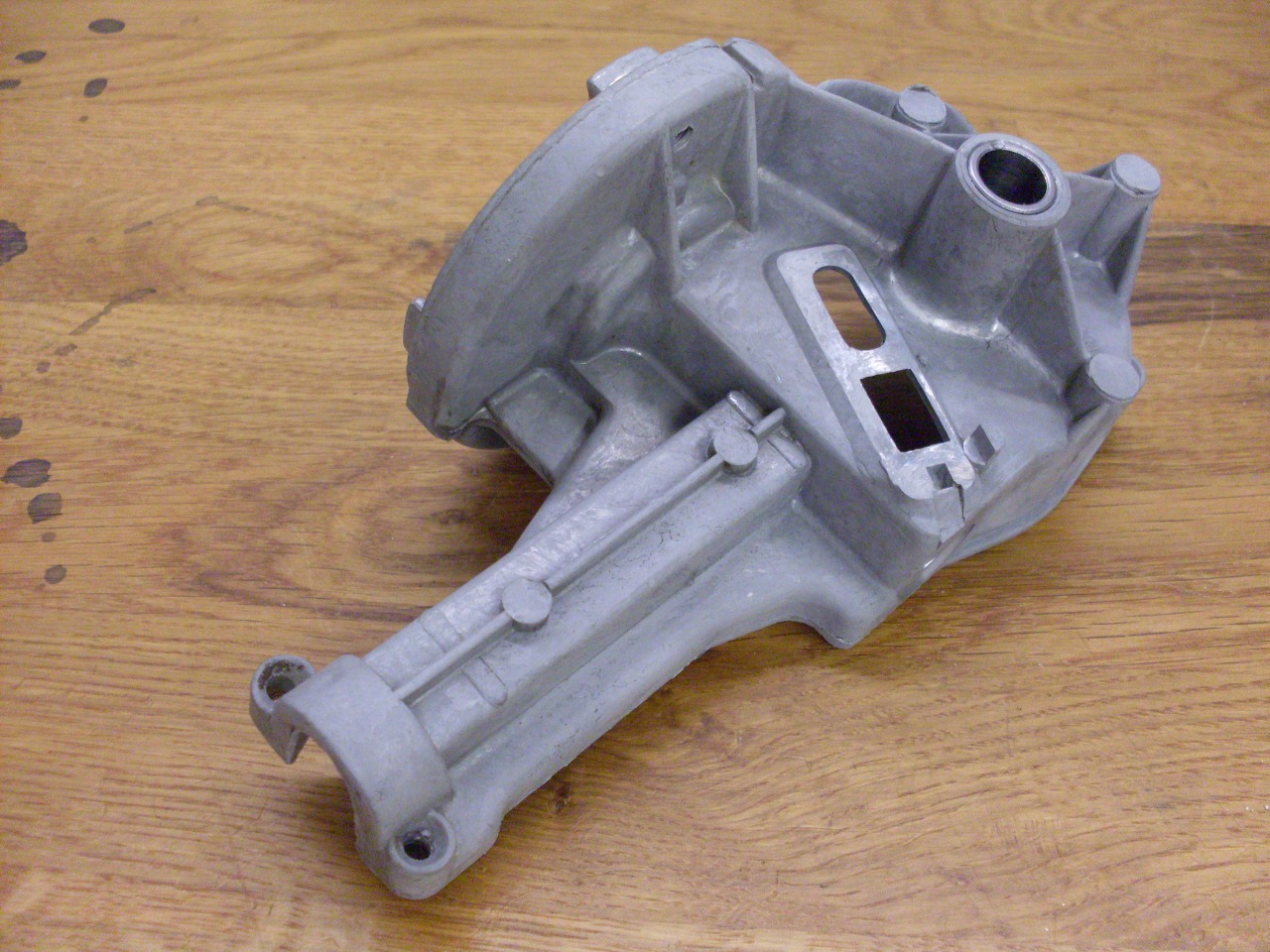
Before
I took the motor apart, I had ordered a new brush set. However,
the original was in such good shape, I didn't use it. My thinking
was that putting new brushes in would increase commutator wear during
the seating period of the new brushes. The original brushes were
already seated on the commutator.
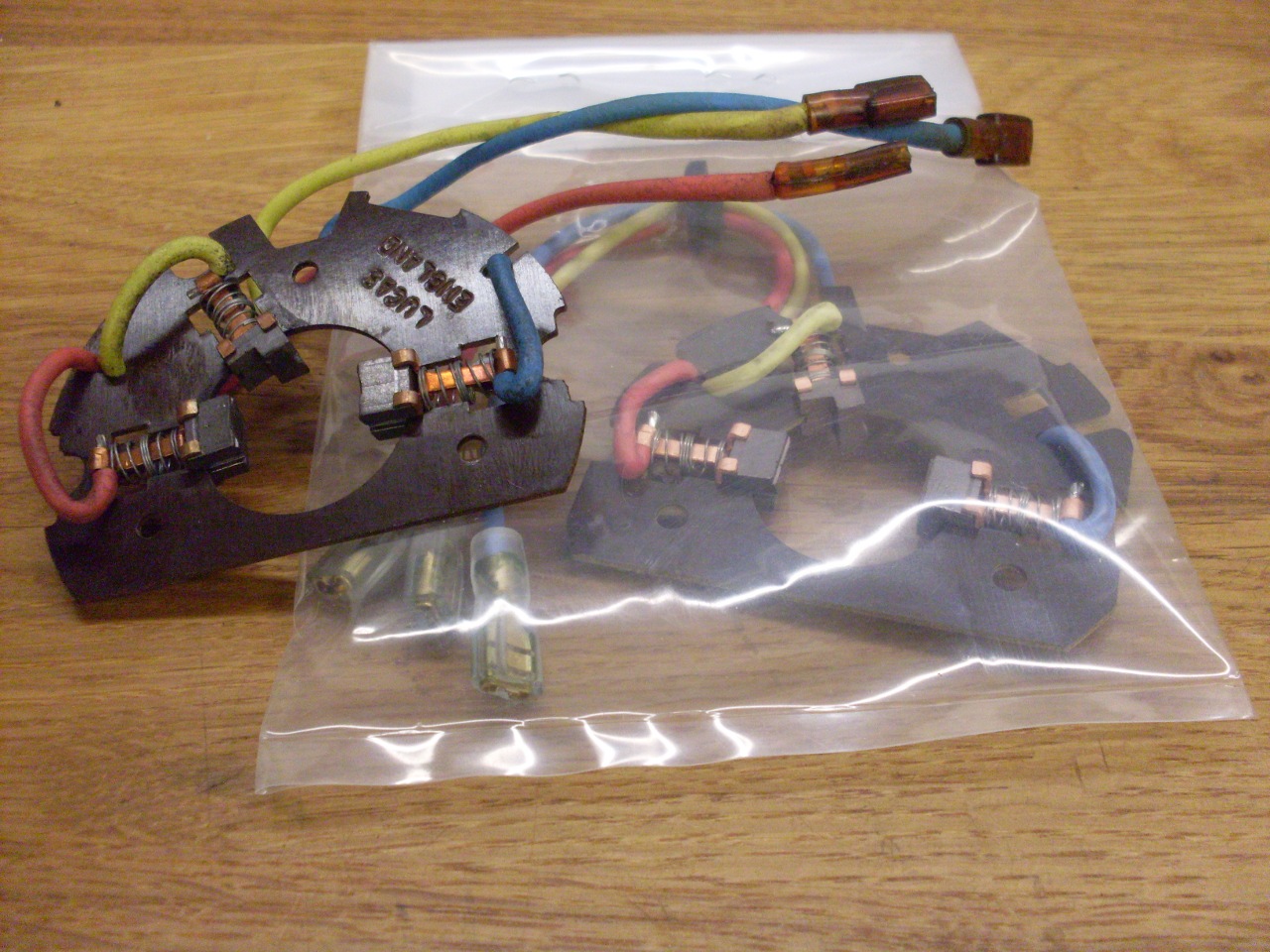
So
here are most of the parts for the wiper motor. The commutator
was lightly cleaned, the motor case and the gear case exterior were
repainted, and the gear cover was replated. All of the internal
bearing bushes were still tight and smooth, so they were just cleaned
and re-lubed.
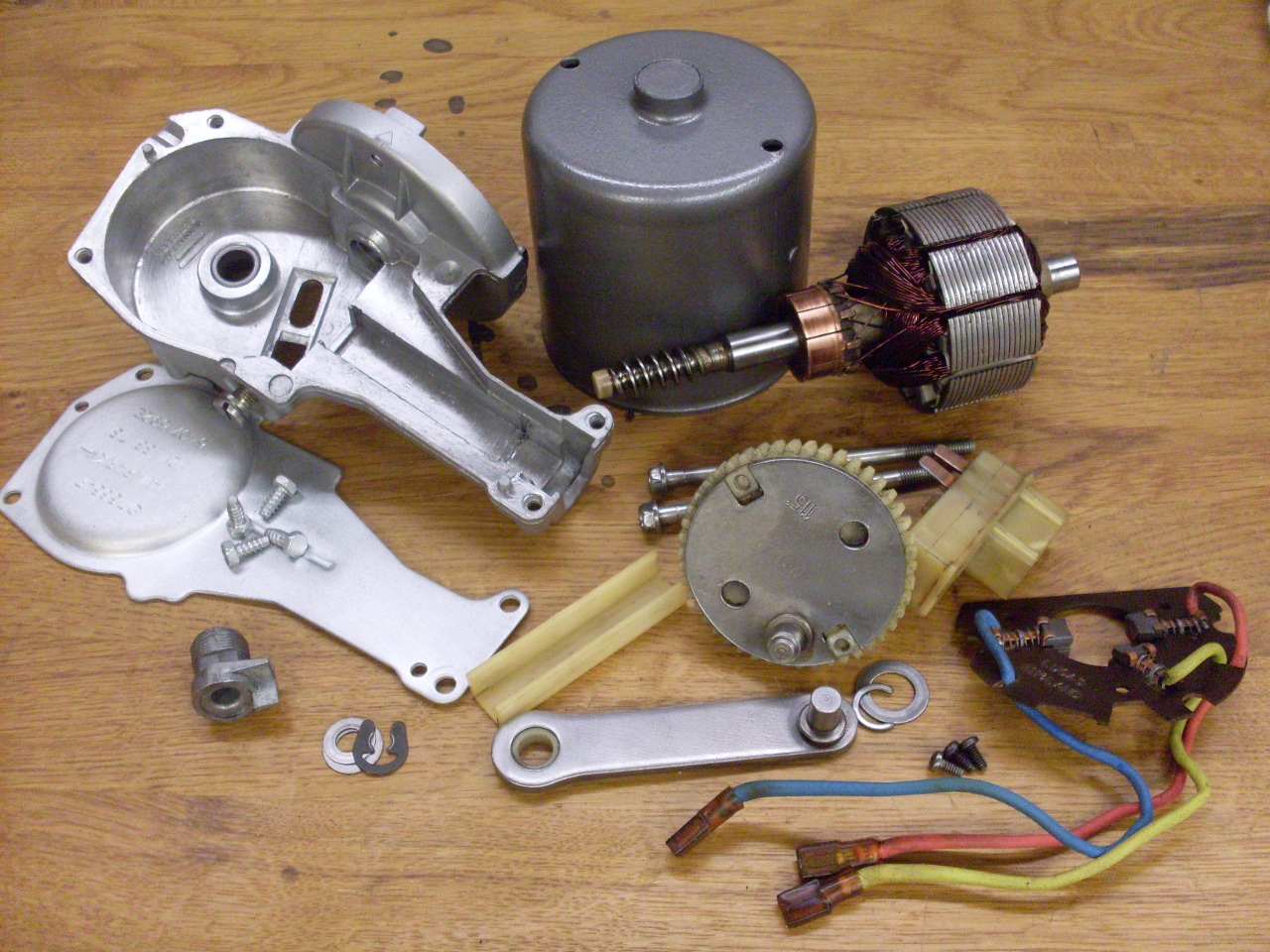
This
is the wiper park switch. It is a switch operated by a cam on the
worm gear. When the wiper switch on the dashboard is turned off,
the park switch keeps the motor energized until the wipers are in their
"parked" position.

The plastic track that the reciprocating block rides in was still in good condition.
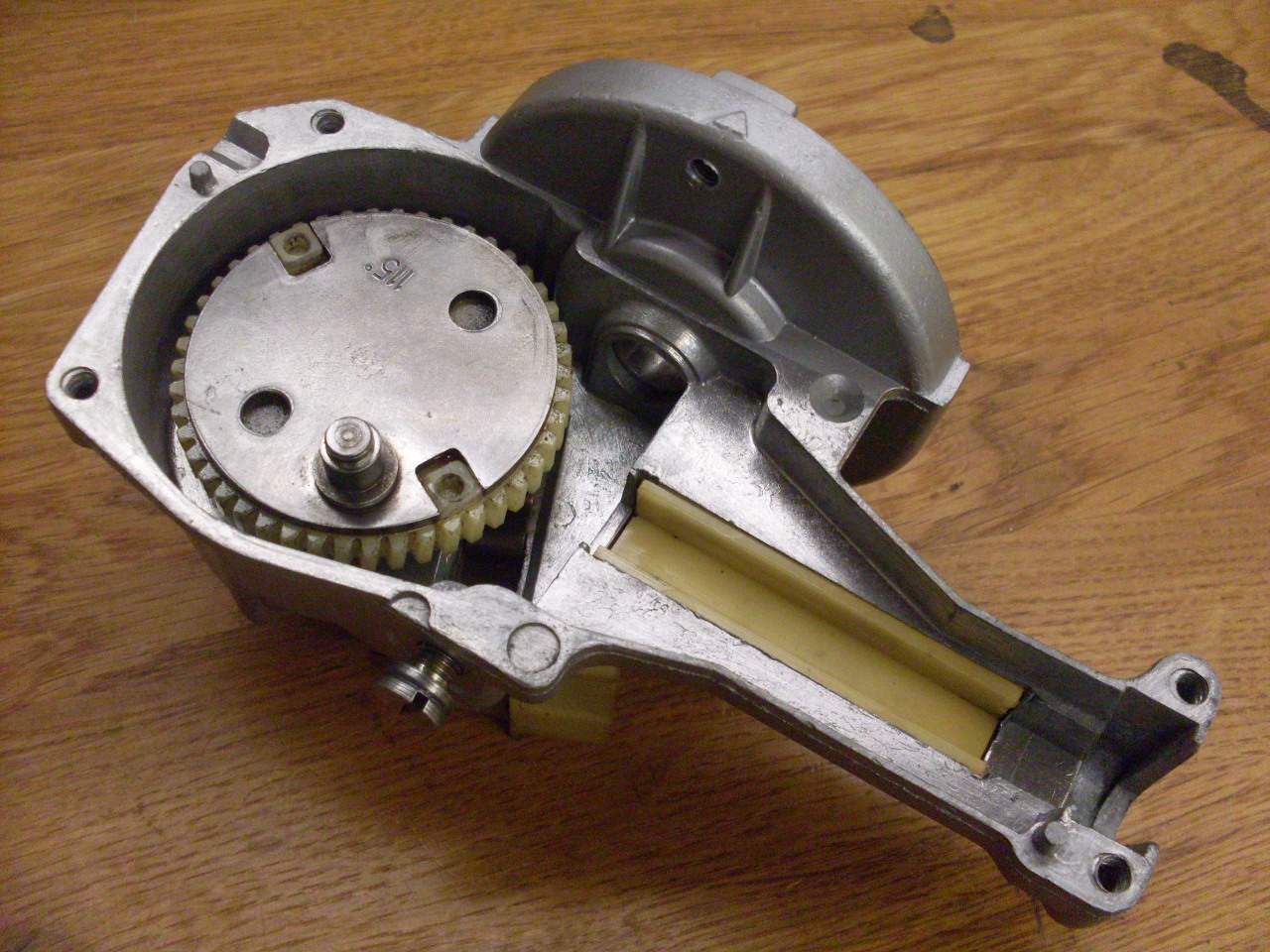
I mounted the motor and the rest of the mechanics...
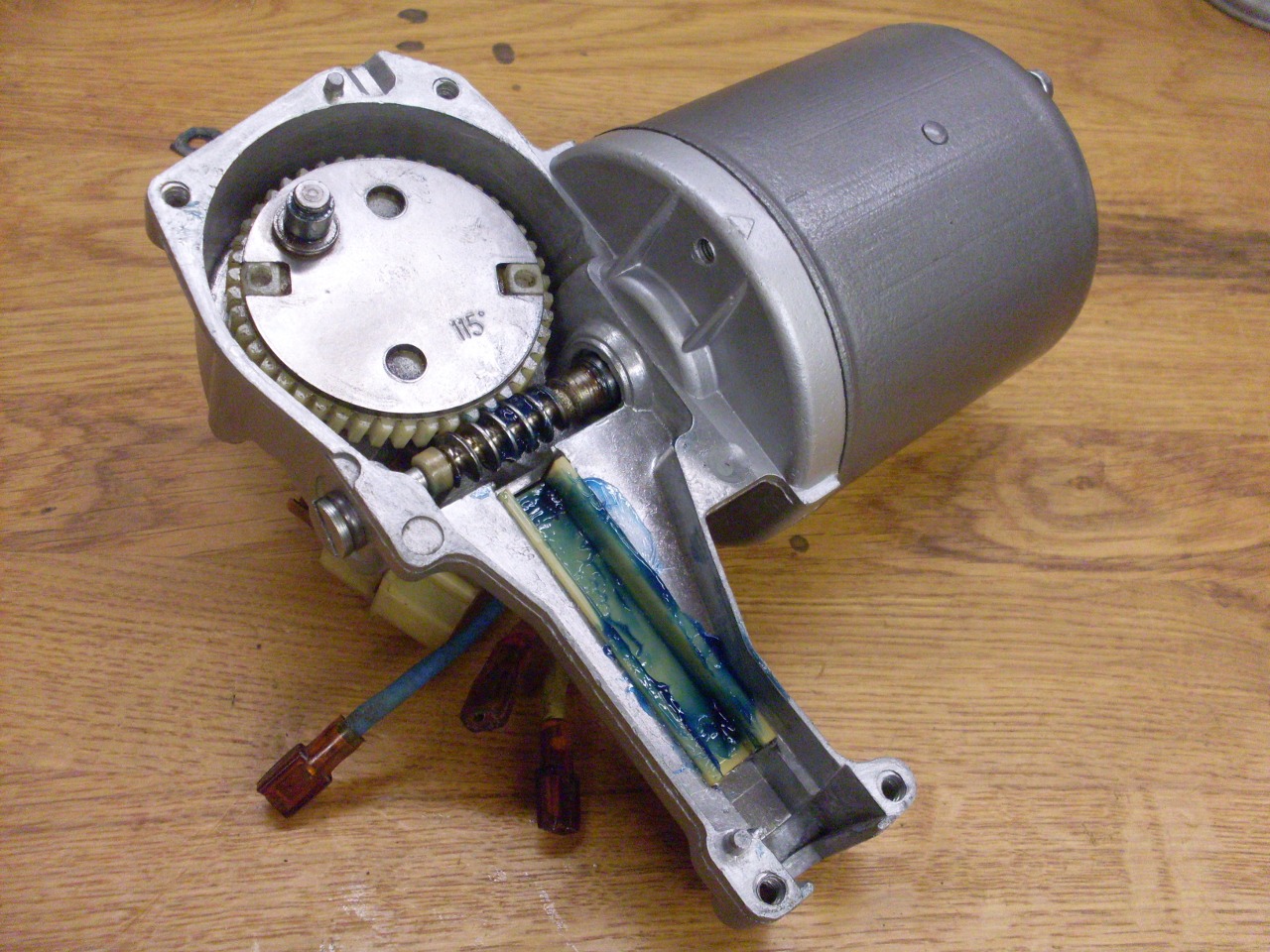
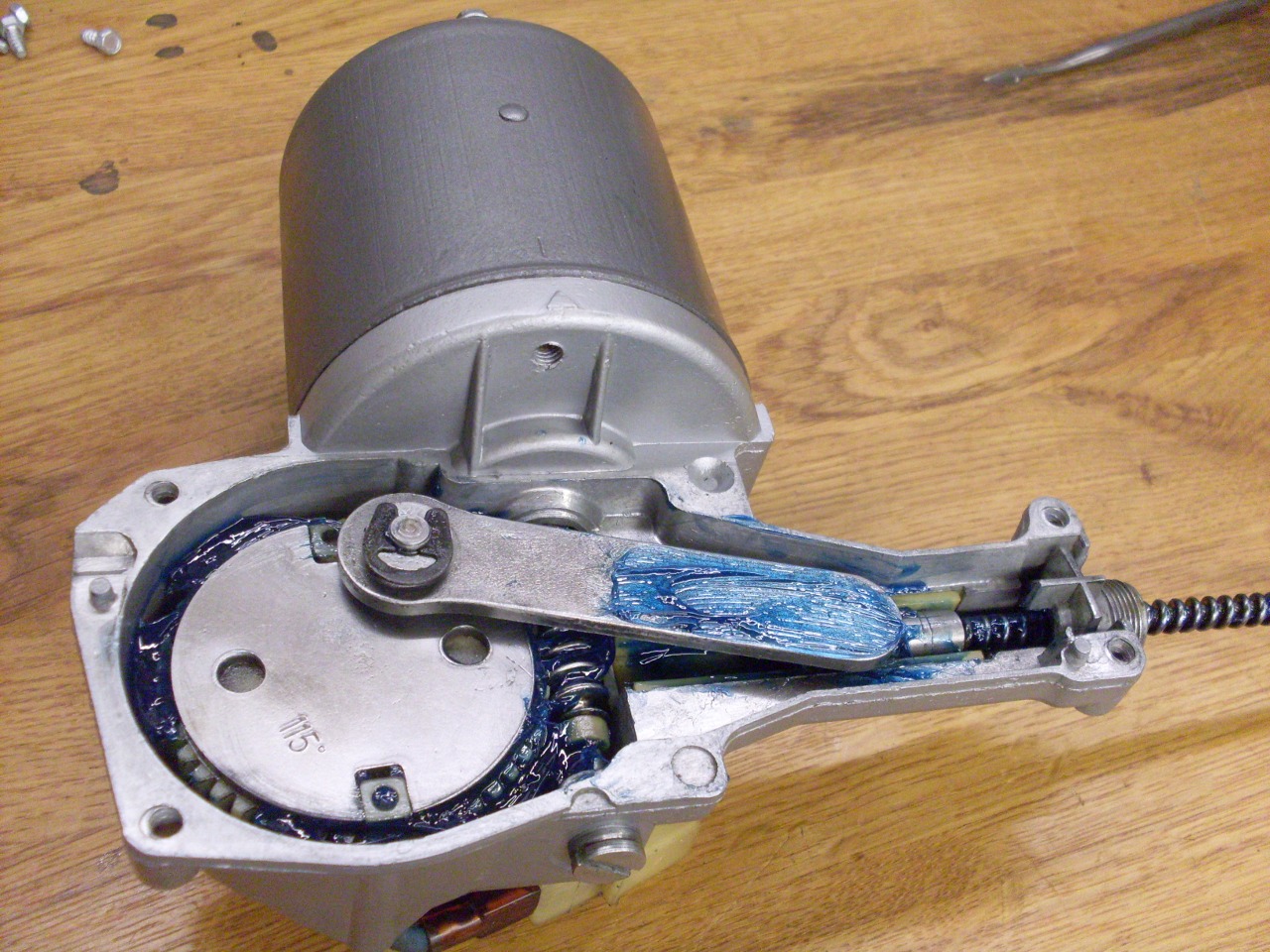
...and buttoned her up.
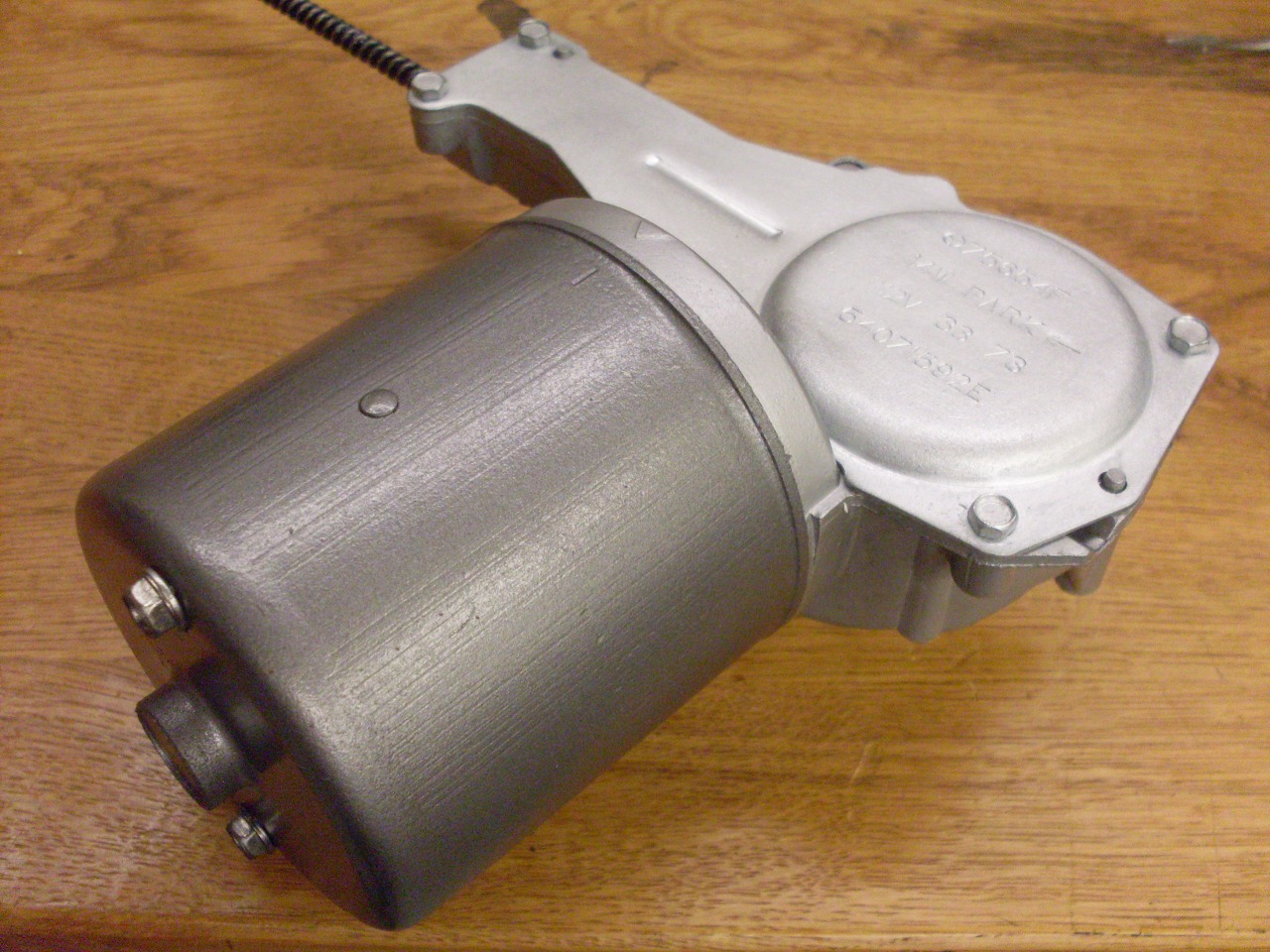
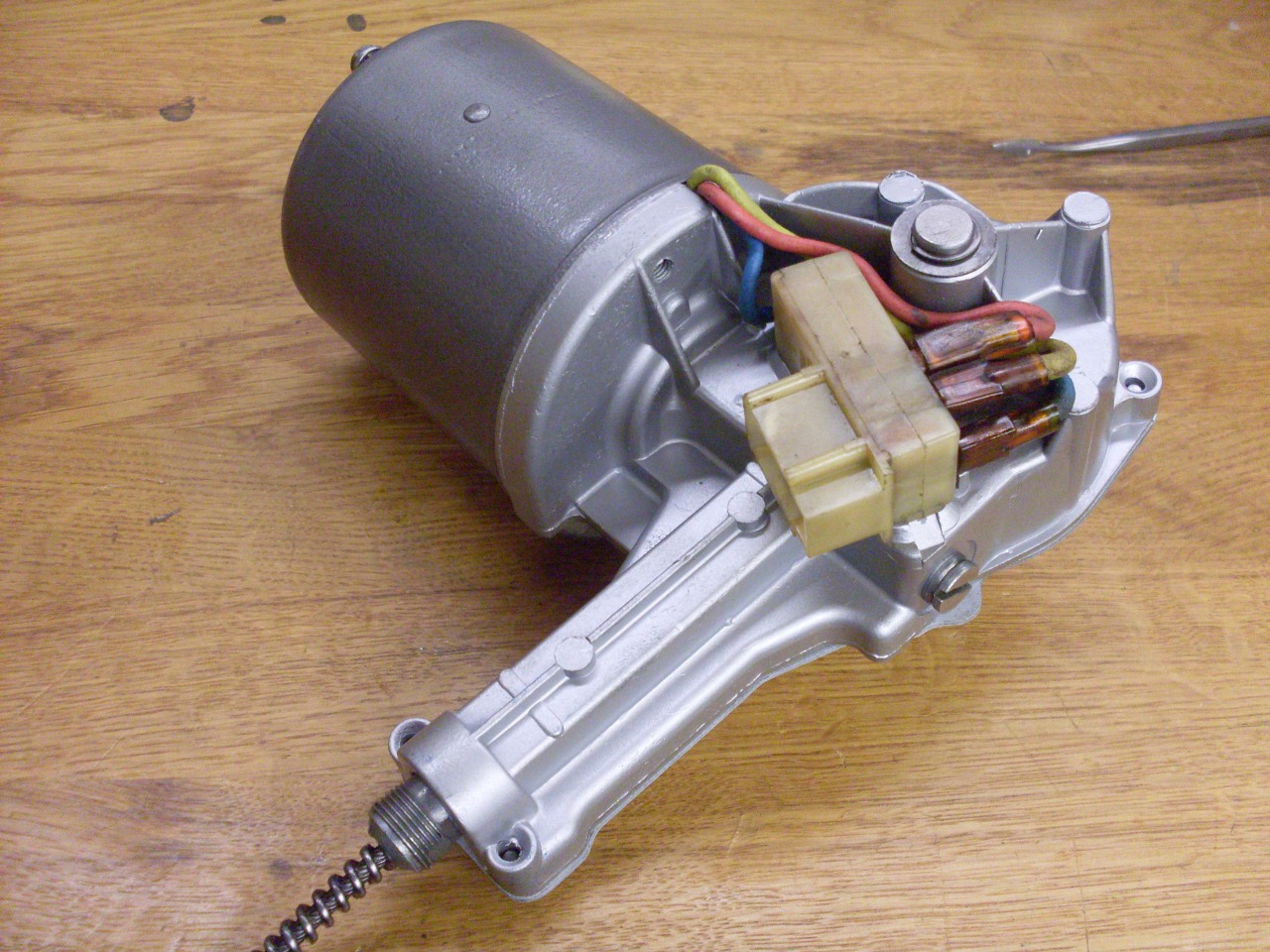
Then
there were the wheel boxes. I had a hell of a time removing them
from the car, mainly because the chromed nuts holding them in the
cowl were seized. I ended up cutting the nuts off, but not before
I'd done a good job twisting the guide tubes for the drive cable.
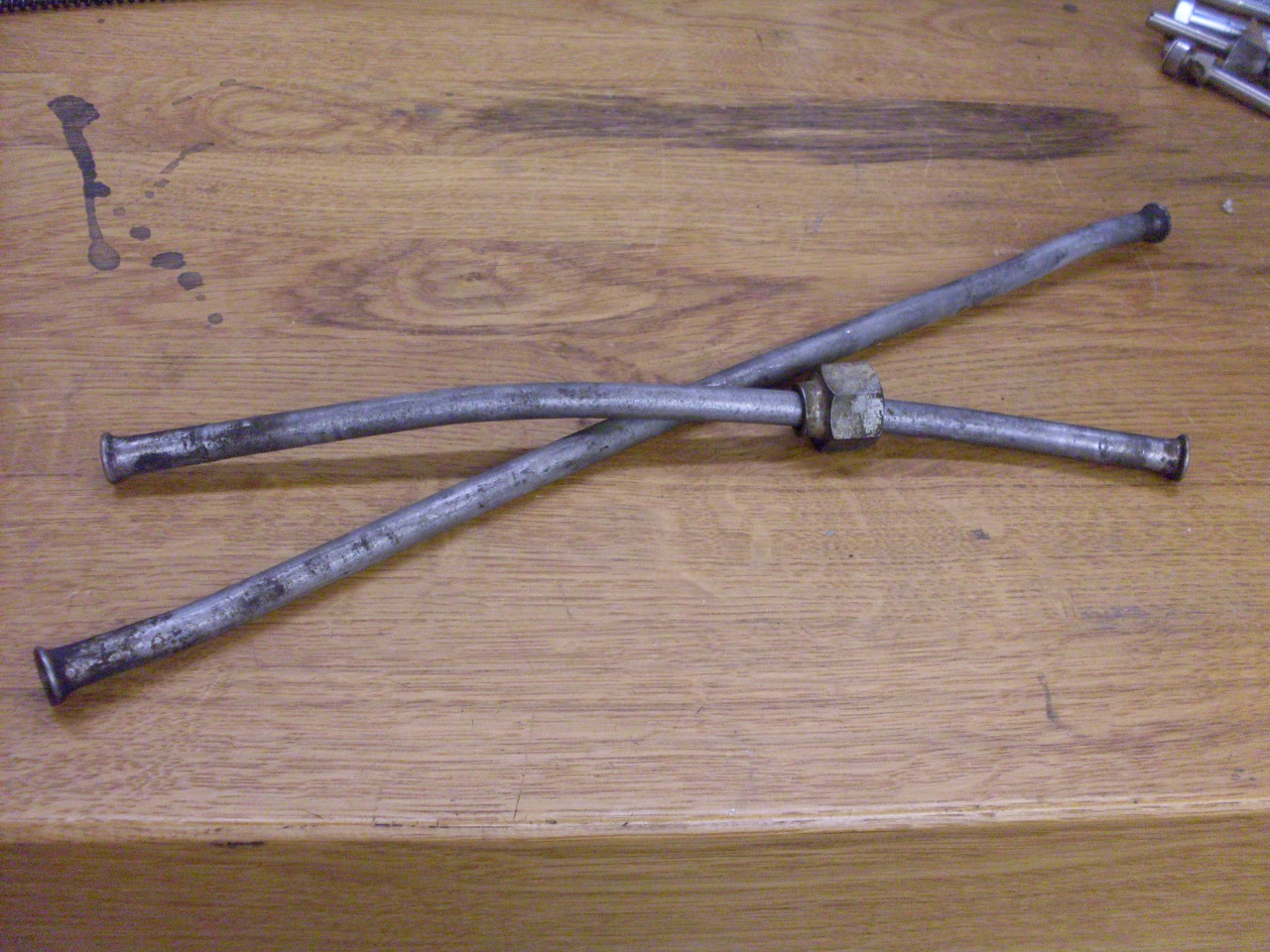
The
wheel boxes themselves consist of a special wheel that mates to the
drive cable like a pinion to a rack. The wheelbox housing carries
the shaft to the wiper arm connection, and a plate to clamp the guide
tubes in alignment with the wheel.
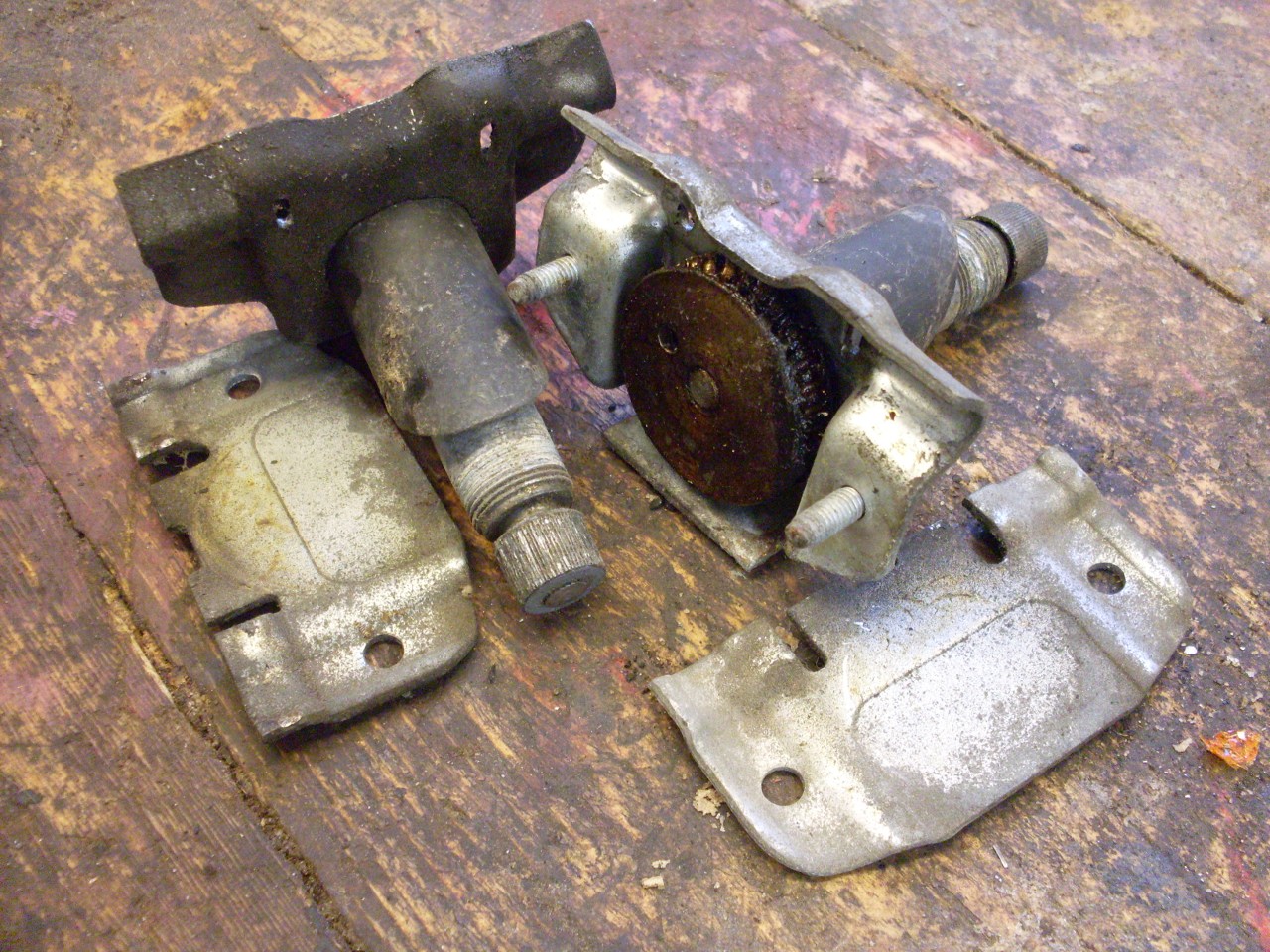
The
wheel boxes were rusty in places, and I wanted to remove the shafts
from the wheel boxes so I could replate the boxes and properly
lubricate the shafts. When something isn't designed to be
disassembled, it doesn't mean you can't take it apart. On the
other hand, just because you can take something apart, it doesn't mean
you should.
I assumed that I could remove the wheels from
the shafts, and the shafts would slide out. This turned out not
to be true. I got the wheels off, bit the splines on the shafts
were bigger than the shafts. These must have bee assembled by
putting the wheels on the shafts, then sliding the shafts in place, and
staking the wiper arm mounts to the shafts.
Removing the
wheels did make it easier to clean out the old dried up grease behind
them, and to flush out the shaft bore with solvent, so maybe it was
worth it.
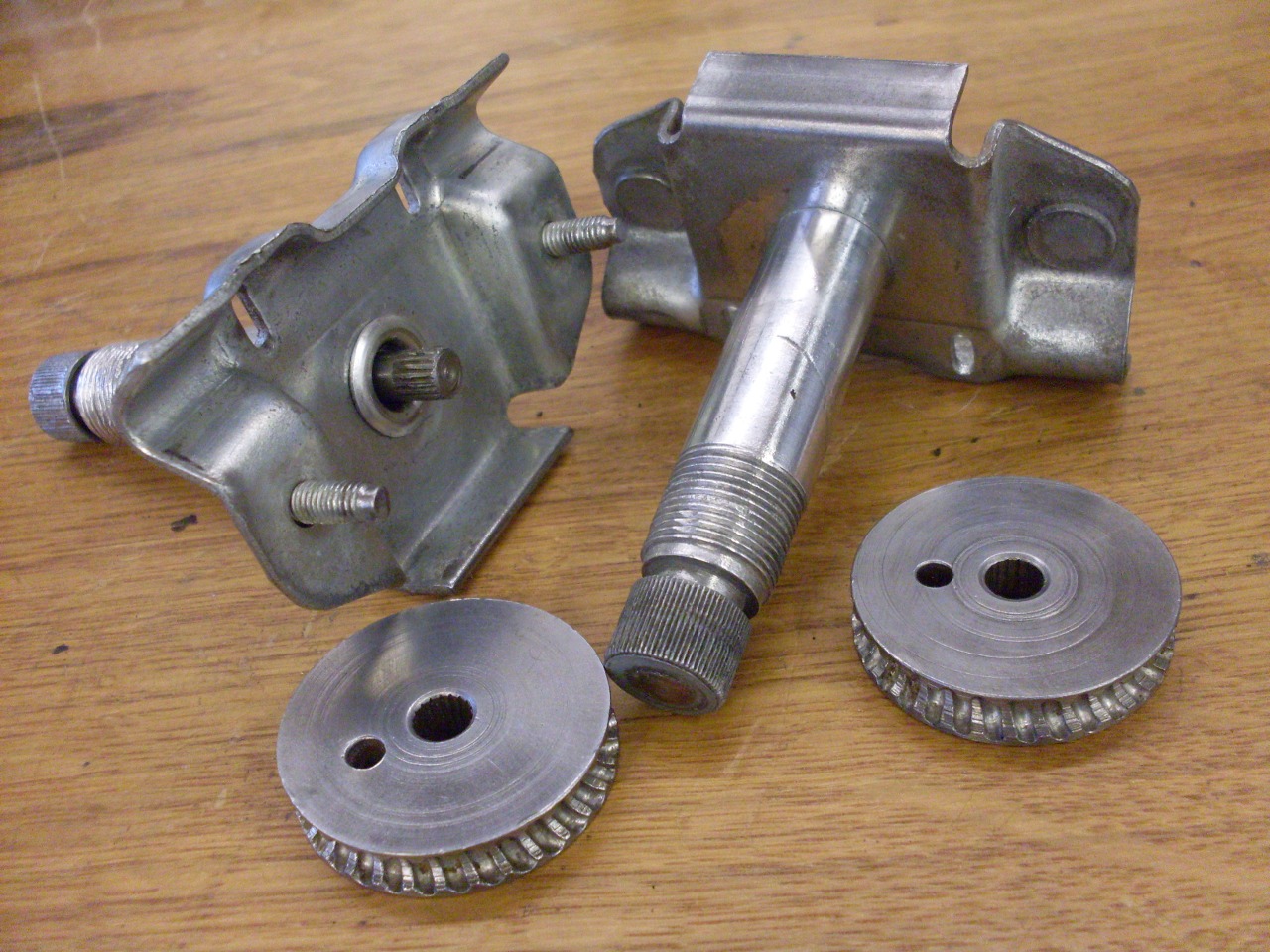
Since
I washed all of the lube from the bores, I used this vacuum pump
contraption to suck grease back into the bores with the shafts in place.
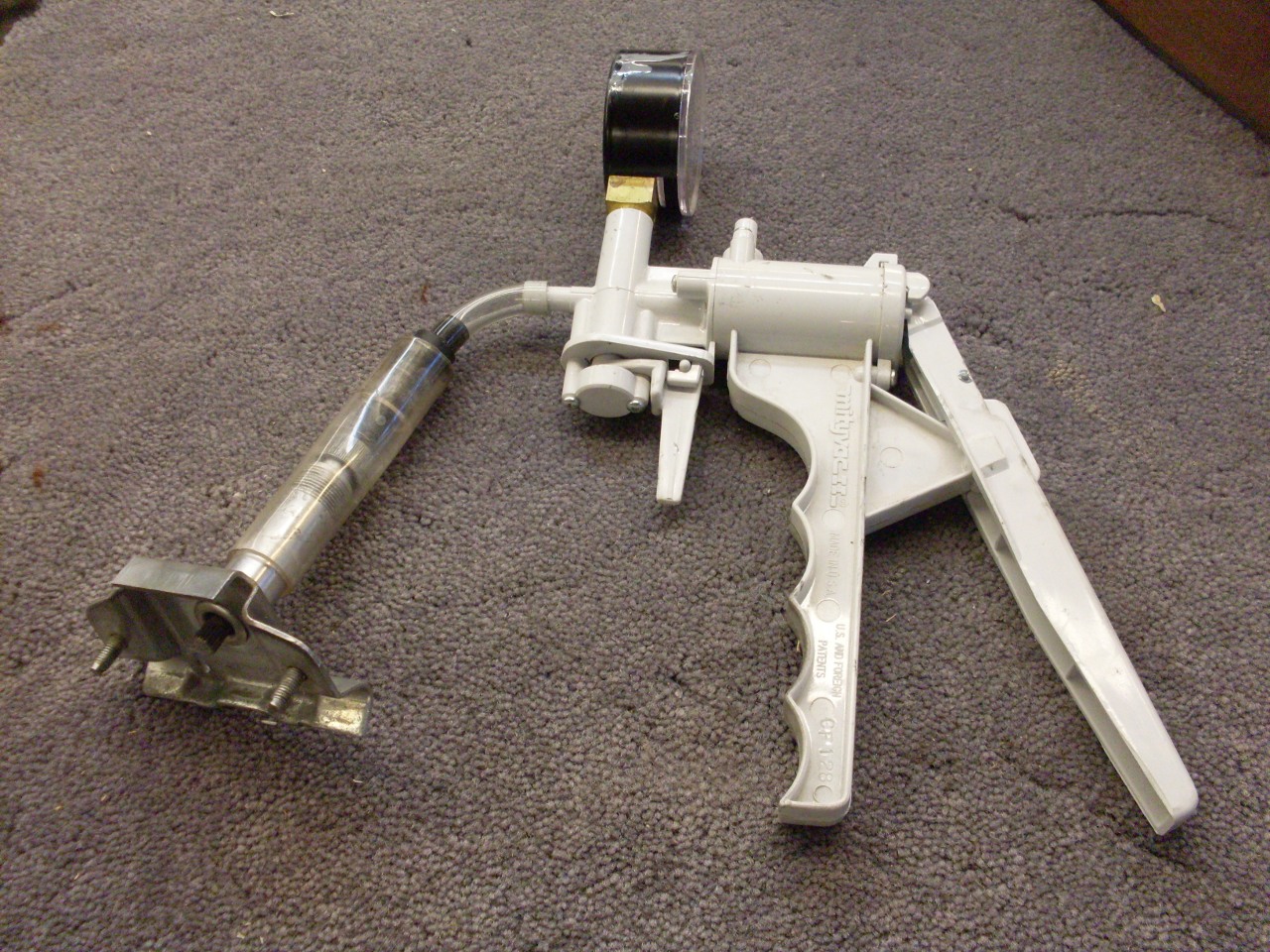
Then
made some new guide tubes by putting double flare ends on 5/16" brake
line. I initially forgot the little short tube at the far
end of the cable. I had to make that later. The tube with
the connector nut has to be bent, but I'll do that when I install the
wiper system.
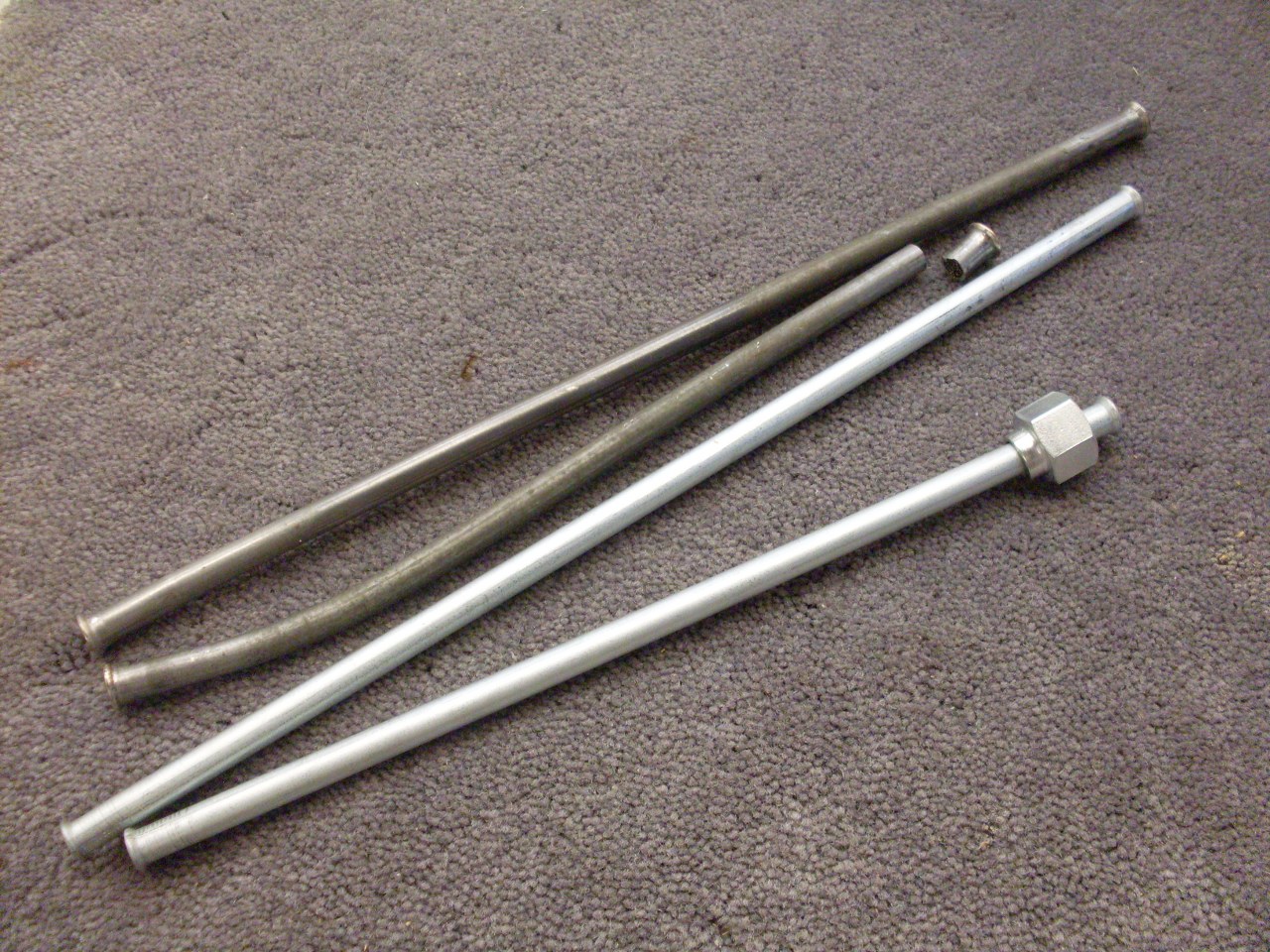
I
painted the wheel boxes, plated the covers, relubed the
shafts, pushed the wheels back on, and did a trial assembly and
test. Everything seemed to work quietly and smoothly..
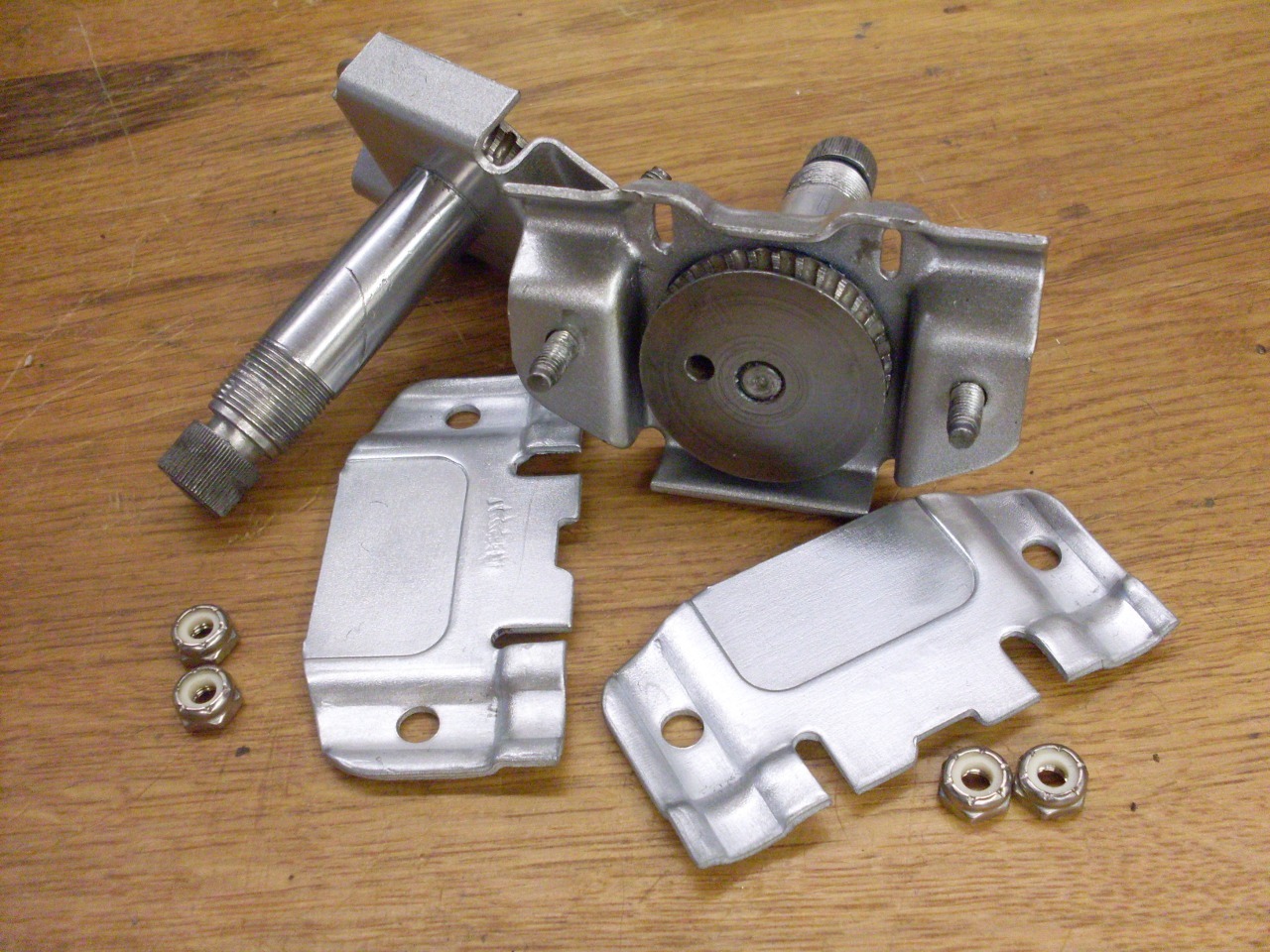
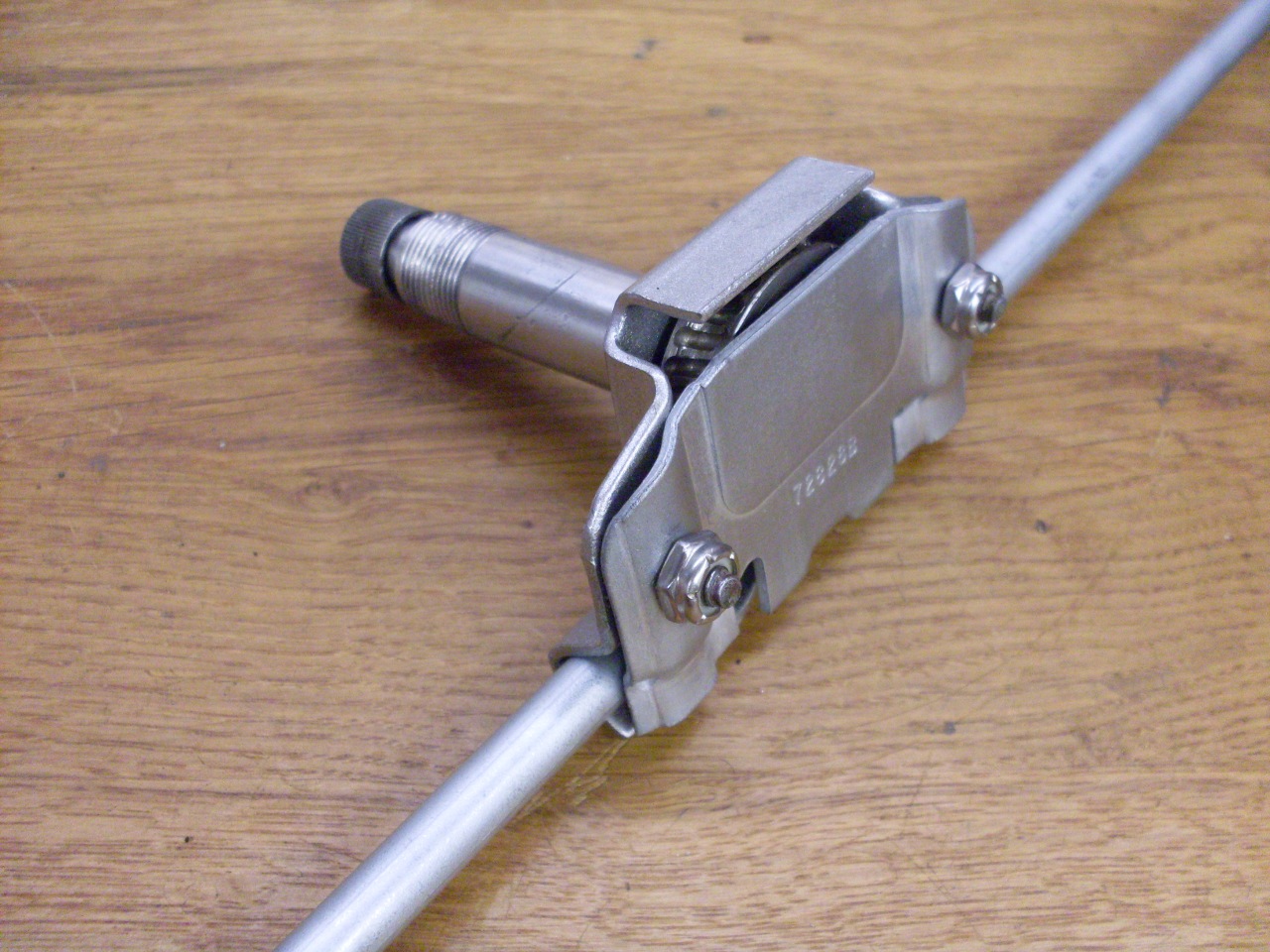
Total
cost for this project was pretty small. I did buy the brush set,
but didn't use it. The brake line for the guide tubes was
about $6. I still have to buy the chrome nuts I destroyed, and
the plastic housings for the washer nozzles appear to be toast, but
those will come later.
Comments to: elhollin1@yahoo.com
To my other TR6 pages.